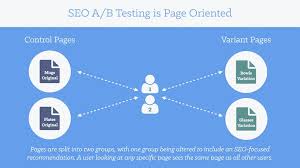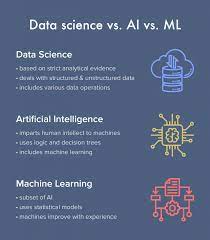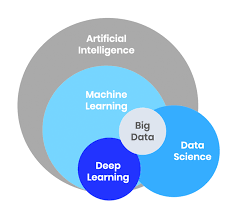The Evolution of Software Development
Software development has come a long way since its inception. From the early days of programming languages like Fortran and COBOL to the modern era of agile methodologies and cloud computing, the evolution of software development has been nothing short of revolutionary.
Early Days
In the early days of software development, programmers would write code using low-level languages that were specific to the hardware they were working with. This made programming a complex and time-consuming task, requiring a deep understanding of computer architecture.
Rise of High-Level Languages
The advent of high-level programming languages like C, C++, and Java changed the game by allowing developers to write code that was more human-readable and easier to maintain. This shift made software development more accessible to a wider audience and paved the way for rapid innovation.
Agile Methodologies
With the rise of agile methodologies such as Scrum and Kanban, software development became more iterative and collaborative. Agile practices emphasise flexibility, adaptability, and customer feedback, enabling teams to deliver high-quality software in shorter timeframes.
Cloud Computing
The advent of cloud computing has revolutionised how software is developed, deployed, and maintained. Cloud platforms like AWS, Azure, and Google Cloud provide developers with scalable infrastructure and services that enable them to build robust applications with ease.
The Future
As technology continues to advance at a rapid pace, the future of software development looks promising. Emerging trends such as artificial intelligence, machine learning, and blockchain are reshaping the industry landscape and opening up new possibilities for innovation.
In conclusion, the evolution of software development has been marked by continuous innovation and adaptation to changing technologies. By staying abreast of industry trends and embracing new methodologies, developers can continue to push boundaries and create cutting-edge solutions that shape the future.
Understanding Software Development: Key Questions Answered
- What is software development?
- What are the different stages of the software development life cycle?
- Which programming languages are commonly used in software development?
- How does agile methodology differ from traditional software development approaches?
- What role does testing play in the software development process?
- How is cybersecurity addressed in software development?
What is software development?
Software development refers to the process of creating, designing, implementing, and maintaining software applications that meet specific user requirements. It involves a systematic approach to building software solutions, encompassing tasks such as coding, testing, debugging, and deployment. Software development aims to address various needs and challenges faced by individuals and businesses by leveraging technology to create efficient and user-friendly applications. This dynamic field continues to evolve with advancements in programming languages, tools, and methodologies, enabling developers to craft innovative solutions that drive progress in the digital age.
What are the different stages of the software development life cycle?
The software development life cycle consists of several key stages that guide the process of creating software from inception to deployment. These stages typically include requirements gathering, analysis, design, implementation, testing, and maintenance. During the requirements gathering phase, the project’s objectives and user needs are identified. Analysis involves breaking down these requirements into detailed specifications. Design focuses on creating a blueprint for the software’s architecture and functionality. Implementation involves coding based on the design specifications. Testing ensures that the software functions correctly and meets quality standards. Lastly, maintenance involves ongoing updates and support to keep the software running smoothly. Each stage plays a crucial role in ensuring the successful development and delivery of high-quality software products.
Which programming languages are commonly used in software development?
In software development, several programming languages are commonly used to create a wide range of applications and systems. Some of the most popular languages include Java, Python, C++, C#, and JavaScript. Java is renowned for its versatility and portability, making it ideal for building enterprise-level applications. Python’s simplicity and readability make it a favourite for web development, data analysis, and artificial intelligence projects. C++ is often chosen for system software and game development due to its efficiency and performance. C# is commonly used in Microsoft environments for developing desktop applications and games. JavaScript is essential for web development, enabling interactive and dynamic content on websites. Each programming language has its strengths and is selected based on the specific requirements of the project at hand.
How does agile methodology differ from traditional software development approaches?
In the realm of software development, the agile methodology stands out from traditional approaches by its emphasis on flexibility, collaboration, and iterative processes. Unlike traditional methods that follow a sequential and rigid approach to development, agile methodology encourages continuous feedback, adaptation to change, and close collaboration between cross-functional teams. By breaking down projects into smaller increments called sprints and prioritising customer satisfaction through early and frequent deliveries, agile methodology enables faster response to evolving requirements and ensures that the final product meets user needs effectively. This dynamic and customer-centric approach sets agile apart from traditional software development practices, ultimately leading to more efficient project delivery and higher-quality outcomes.
What role does testing play in the software development process?
Testing plays a crucial role in the software development process as it ensures the quality, reliability, and functionality of the final product. By systematically evaluating the software for defects, errors, and inconsistencies, testing helps identify issues early on, allowing developers to address them before deployment. Through various testing techniques such as unit testing, integration testing, and user acceptance testing, developers can verify that the software meets the specified requirements and performs as intended. Ultimately, testing is essential for delivering a high-quality product that meets user expectations and maximises customer satisfaction.
How is cybersecurity addressed in software development?
Cybersecurity is a critical aspect addressed in software development to ensure the protection of sensitive data and systems from potential threats. Developers implement various security measures throughout the software development lifecycle to mitigate vulnerabilities and safeguard against cyber attacks. This includes conducting regular security assessments, implementing encryption techniques, following secure coding practices, and staying updated on the latest security trends and best practices. By prioritising cybersecurity in software development, organisations can enhance the resilience of their applications and build trust with users by ensuring their data remains secure.





